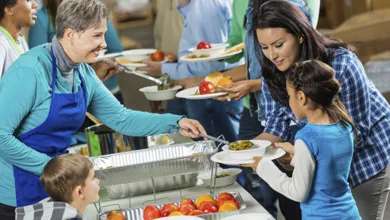Empowering Techniques for Solo Adults

Much of society believes American households consist of a nuclear family: A man, woman, and two children. Remarkably, the U.S. Census Bureau tells us otherwise — American households consist primarily of solo adults.
Accordingly, 35.7 million Americans live alone. That’s 28 percent of households, an increase from 13 percent of households in 1960 and 23 percent in 1980. Demographers say delayed or forgone marriage, longer life expectancy, urbanization, and wealth have contributed to this trend.
Solo living wasn’t a relevant topic to me until my parents passed away. Taking care of them took a bulk of my sisters’ and my time. If you’ve cared for an older relative, you can relate: Caregiving is full of challenges, heartache, and stress — my wake-up call. It illustrated the potential struggles most adults will encounter.
That’s when I got on the stick to create a healthy, connected, and supportive lifestyle. Otherwise, my own aging circumstance would derail me quickly since I have no spouse, partner, or adult children on whom to rely.
Whether it’s your first time living alone or you’re a solo pro, here are a few strategies to smooth out the rough spots.
➤ Have faith and trust all will be OK. You are not alone — thousands of people are thriving on their own. My solo-living Facebook group has almost 10,000 members. What does that tell you? We may face challenges, but one thing is true: We’re self-reliant.
➤ Be resourceful. You have the ability to find quick and clever ways to overcome difficulties. At its core, this is about finding solutions to problems one currently has within their life. Those who focus energy on solutions continue a cycle of positive momentum. They notice the problem, focus on the solutions that will solve it, re-adjust as much as necessary, and experience progress which brings positive emotion. And the cycle repeats itself. The net result is progress and growth.
➤ Have a morning routine that gets you up and going. It could be meditating, journaling, praying, and/or starting the day with exercise. I enjoy stretching and going for a walk. You only need a few things to give your morning structure. Walk with a friend or neighbor, or run an errand together.
➤ Make time for you and take good care of you. I’ve been on my own for 20 years! But as I get older, if I’m sick or not feeling well, I’m up a creek. The worry of having no one in the house to run an errand can be stressful. When living solo, you cannot rely on anyone other than yourself. So, it is essential you are as strong and healthy as you can be. And this is the biggest reason I live in a high-rise: There are many neighbors living close by.
➤ Make friends with your neighbors. Take charge and start a support group of like-minded friends or neighbors. Gather and discuss ways you can help each other remain independent and strong.
➤ Eat well. Avoid fast foods and form nutritious habits. I enjoy cooking, but it can be a hassle doing it for one. However, I’ve adapted and have found it easier to cook healthy and nutritious meals. The top foods to eat are vegetables, greens, seeds, nuts, and low-fat meats. But check with your doctor before changing your diet too much.
➤ Keep your mood in check. Staying active, eating nutritiously, connecting with peers, going outdoors for a walk, and getting fresh air will benefit your body and mind.
Finally, follow Theodore Roosevelt’s advice: “Do what you can with what you have, where you are.”






